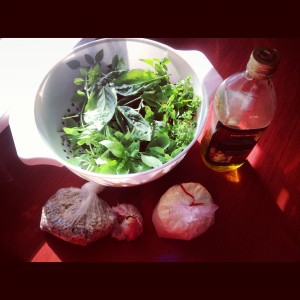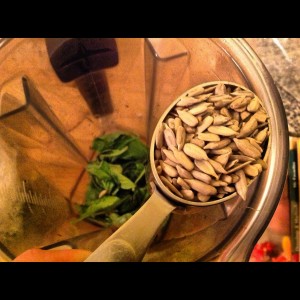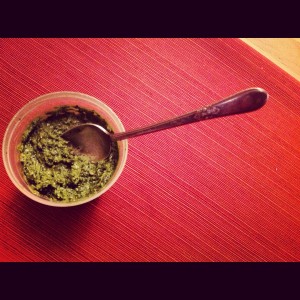
 For me, the bison, or the American buffalo, provokes the kind of passion that is at the very core of my love for food that truly satisfies and nourishes. It is food to swoon over. The bison represents that which matters and that which I hold most dear. It is a sacred meat.
For me, the bison, or the American buffalo, provokes the kind of passion that is at the very core of my love for food that truly satisfies and nourishes. It is food to swoon over. The bison represents that which matters and that which I hold most dear. It is a sacred meat.
It all began in book club when I read Buffalo for the Broken Heart by Dan O’Brien. A bison rancher in South Dakota, Dan is also an ecologist who eloquently points out the vast differences between bison, evolved for about 120,000 years in their native environment, and cattle, transplanted onto it about a century ago by Europeans after most of the sixty million buffalo were slaughtered. Looking for a reason to be, and a way to live out his passion for the biodiversity of the northern great plains, Dan turned to buffalo ranching, and his story is both inspiring and enlightening.
Bison represent a million years of coevolution that produces a community of species whose relationship is symbiotic. They evolved with the land, native plant species evolved next to them, and bison are perfectly suited to thrive in their native environment and live in harmony with it. They dig up little seeps of water throughout the pasture instead of needing water brought to them. They move into the wind instead of trying to avoid it, and are not bothered by snow or frigid temperatures like the less protected cattle. Thousands of cattle often die during severe winters, but not buffalo. We’re here too, living alongside the cattle, the bison, the native grasses, and other native species. We are at the top of the food chain, as some might say, stewards or keepers of the land. And this basic concept of interacting with the nature that we live next to and have a relationship with, extends to us, human beings, often in search of meat to eat.
 I’m a meat eater and a relatively happy one. Having said this, I totally relate to Michael Pollan’s dilemma in the The Omnivore’s Dilemma, when he attempts to enjoy a rib-eye steak cooked medium-rare, while simultaneously reading a book entitled Animal Liberation. Eating meat is generally no longer couched within the cultural norms and rituals of the pre-industrial era, which allowed people to eat meat without agonizing too much over it.
I’m a meat eater and a relatively happy one. Having said this, I totally relate to Michael Pollan’s dilemma in the The Omnivore’s Dilemma, when he attempts to enjoy a rib-eye steak cooked medium-rare, while simultaneously reading a book entitled Animal Liberation. Eating meat is generally no longer couched within the cultural norms and rituals of the pre-industrial era, which allowed people to eat meat without agonizing too much over it.
 As modern Americans, we have PLENTY of meat and can have it for breakfast, lunch, and dinner if we please. We go to the grocery store and see row upon row of neatly saran-wrapped pinkish red matter. There is no limit to the amount of corn-laden meat the conventional American meat industry provides us, and many of us are mindlessly eating it here, there, and everywhere. We are now part of a food chain in which we are the higher-order thinkers who have a block on thinking. We’ve broken our connection to the earth and the animal. So most of us don’t agonize. But some of us do; even if just a little.
As modern Americans, we have PLENTY of meat and can have it for breakfast, lunch, and dinner if we please. We go to the grocery store and see row upon row of neatly saran-wrapped pinkish red matter. There is no limit to the amount of corn-laden meat the conventional American meat industry provides us, and many of us are mindlessly eating it here, there, and everywhere. We are now part of a food chain in which we are the higher-order thinkers who have a block on thinking. We’ve broken our connection to the earth and the animal. So most of us don’t agonize. But some of us do; even if just a little.
As a fairly cheerful meat eater, and one who admittedly spent years not really thinking about the meat I was eating (beyond how to make it as tasty as possible) I have more recently had to sustain an uncomfortable tension, a kind of dissonance, which comes from doing a little thinking on the subject. I’ve seen FoodInc. I’m a huge proponent of local, organic, sustainably raised food and only buy this kind of meat for myself. But I often don’t exercise a very discriminating mind when I’m sitting in front of a savory steamy chunk that somebody else has offered. I don’t want to question it when it’s put before me and a knife and fork are within reach. I don’t want to question it when my friends invite me to their house for Thanksgiving, or to a fun new restaurant that doesn’t necessarily source a product that I would purchase for my own dinner. And then I feel a bit guilty.
I think the guilt and tension are good. I should feel it. I should think about it. And all of us should make better decisions regarding our meat consumption. This planet is not Disney World. It’s not here to support our every whim and pleasure.
Did you know that because bison are born to live where they have evolved over thousands of years, they don’t need antibiotics or special food to survive? While reading Dan O’Brien’s book, one thing that really struck me was that his buffalo rarely got sick, even in the depths of winter and below-wind chill weather. A buffalo rancher from whom I recently purchased meat, corroborated this when I asked him, “Do your bison ever get sick? Do you ever have to treat them with medicine or antibiotics?” He replied, “No. In fact, I never even know if an animal is sick until it has keeled over dead and that is a rare occurrence.” So when a bison is sick he’s really sick. There’s no sequestering Mr. Buffalo to his room, or visiting the doctor for a dose of antibiotics when he’s under the weather. The American buffalo doesn’t seem to suffer from the common cold. When something is wrong, it’s really wrong. These animals are engineered by natural selection to live alongside us, and they are a perfect example of hardiness in the ecosystem we all share.
So why eat them at all? Well – Because something in me, that is fundamentally me, rejoices when I do so. Because choosing to eat meat from an animal that has lived off of prairie grass, water, and open sky resonates deeply within me. Also, when I listen to my body, I know it wants meat. I don’t believe that I can attain optimal health without some meat in my life. And I know that a bison raised naturally, lives a life in stark contrast to that of the conventional cow who grazes on a feed of soy, corn, and in some cases candy, while standing in its own refuse in a feedlot. Cattle are not meant to eat corn or anything but grass. Ruminants like bison, they are designed to feed in open pastures picking and choosing from a variety of grasses that will most please them. I eat bison because I am an omnivore, a meat eater who also loves my vegetables. Given this reality, that I am a meat eater who is going to eat meat, I try to make good choices that involve knowing where the animal came from and how it lived its life. I want to feel a connection.
And bison is delicious. I wouldn’t have been half as aware of how wonderful bison can actually taste, if it weren’t in thanks to my fiancé’s parents, who read Dan O’Brien’s book and ran with it. Inspired as I was, they sprung to action and researched good sources of bison meat in our area. They landed on a producer who let the bison be (no corn or grain feeding). Bison became the red meat of choice in their household and that’s when I really got on the bison-train. I haven’t purchased beef in months and it’s not because I feel anything strongly against grass-fed beef. It’s just that the bison is so damn delicious.
The other day I followed a recipe that was absolutely amazing for a sirloin-tip roast in the smoker. I got it from this incredibly accurate and helpful video produced by what sound like cowboys with a deep passion for BBQ and b-grade movie saxophone music. I followed their recipe to a “T” and the results were spectacular: a mouthwateringly juicy, intensely flavored sirloin tip roast, perfectly cooked at medium rare.
If you don’t have a smoker, you can achieve similarly succulent results by visiting Dan O’Brien’s website, Wild Idea Buffalo Co for amazing recipes. There is a Bison Roast Recipe on the site which is particularly fantastic.
One more thing about bison meat: It is expensive. As it should be….
Americans eat too much meat. We just do. And the conventional meat industry is doing everything in its power to make that meat cheap and affordable (flashback to cheap subsidized grain-based feed and grossly packed feedlots. Seriously! If you haven’t seen Food Inc yet let this be your prompt). Take a look at this world-wide meat consumption map for perspective:
The average American eats ten to twelve times more meat than the average person in Mozambique or Bangladesh. We eat about eight ounces a day, roughly twice the global average. In Mark Bittman’s 2008 article entitled Rethinking the Meat Guzzler, we learn that “At about 5 percent of the world’s population, [Americans] ‘process’ (that is, grow and kill) nearly 10 billion animals a year, more than 15 percent of the world’s total.” The bison roast I smoked recently cost $9 a pound, whereas a similar roast of conventional beef averages around $4 a pound. This means that I less frequently turn to meat. And when I do, I choose high-quality, organic, hormone and antibiotic free meat that I eat less of, appreciate more, and most definitely savor – a good thing for both my health and the health of the planet.
“But along the distant ridge, just as I had hoped, a string of buffalo appeared and began grazing where the wind had blown the grass clear. I cut the buffalo thin, and when it touched my tongue, I tasted the sky, the wind, and the enormous scale of the northern plains. Behind me, I felt the hum of contented people and knew we were gaining strength with every bite.” – Dan O’Brien


















































